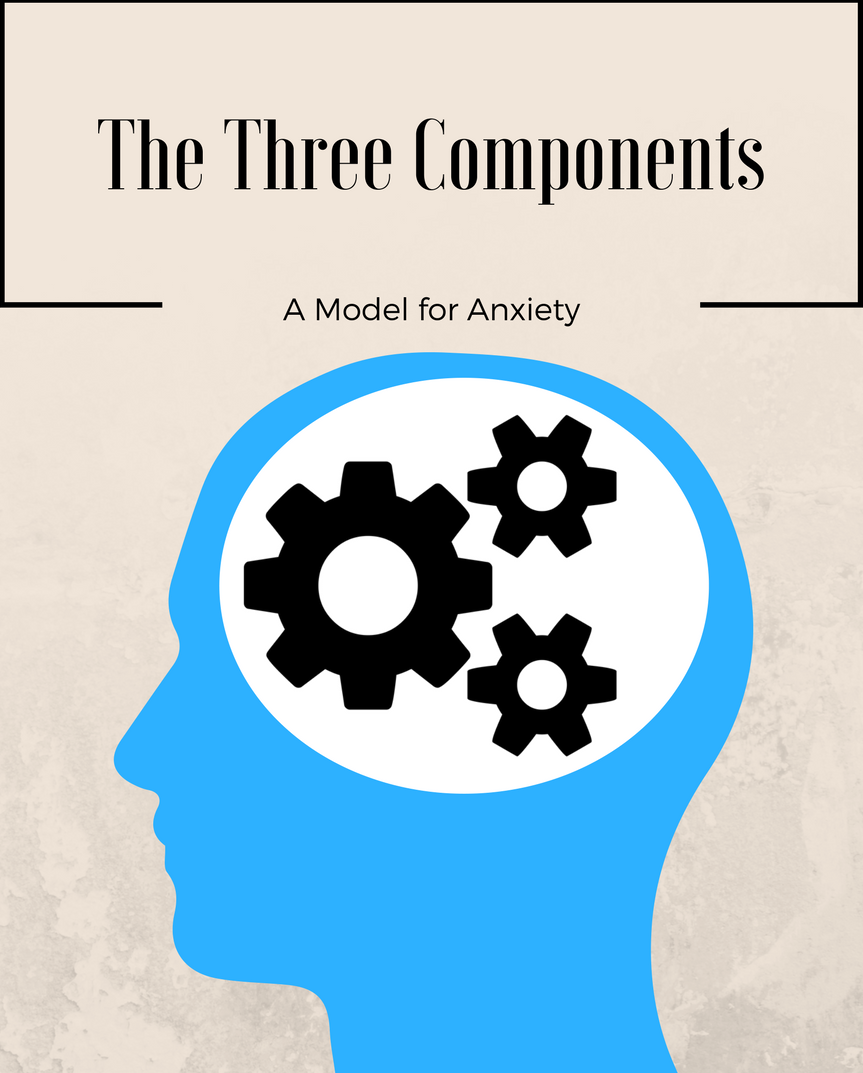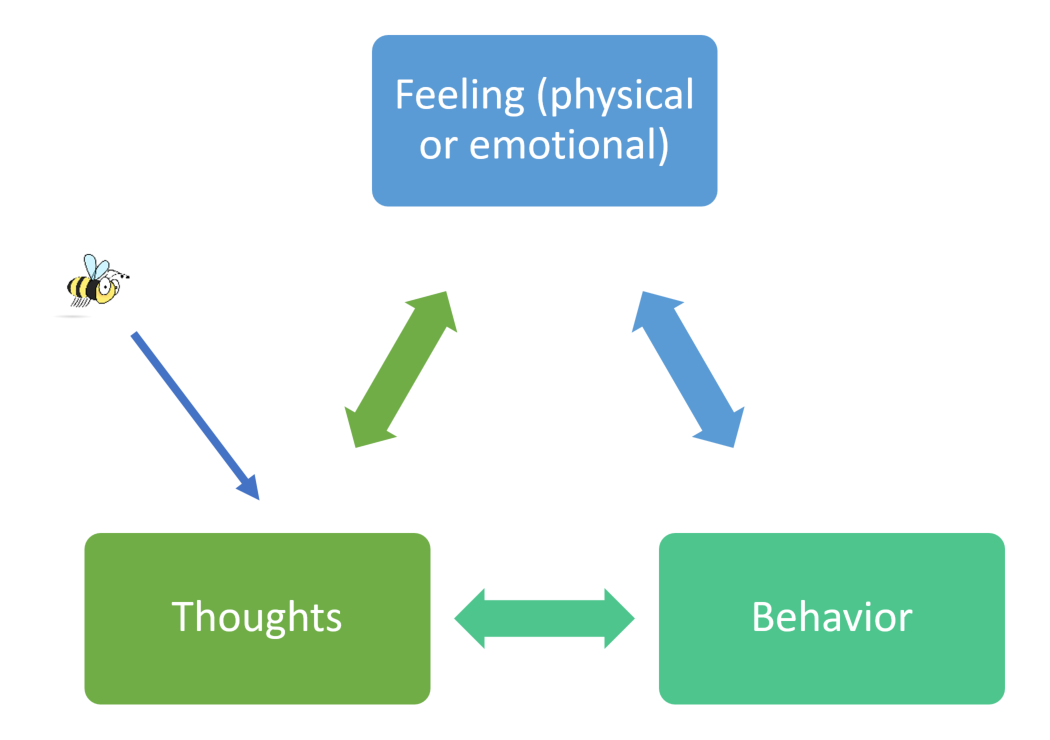When you feel anxious it often means that there is a something in your environment that seems dangerous. That something (e.g., object, person, thought, or future event) is called a trigger. Triggers are connected to anxiety, but do not cause anxiety. We know it is not causal because not everyone feels anxious when experiencing the same trigger.
The 3-Component Model (3-C Model) helps explain how a trigger sets off anxiety, as expressed in your thoughts, feelings and behaviors.
Let’s say I’m afraid of bees.
- Trigger: I see a bee.
- Thought: This bee is after me, he’s going to sting me.
- Feeling: I feel scared. My heart rate increases and my palms sweat.
- Behavior: I run away in terror.
The interesting thing about the 3-C Model is that it does not always work in a simple pattern of trigger → thought → feeling → behavior. Any one of the components can (with or without a trigger) influence your anxiety. For example if I just drank coffee, my physical sensations would be heightened, which may intensify my behavior and my thoughts and lead to a higher level of anxiety.
When you are prone to anxiety, attacks occur quickly. You have thoughts, feelings, and behaviors all happening almost simultaneously. This is because you have developed a predictable pattern of anxiety. It is as if your anxiety tells you “If I think or feel this way, I must behave this way” (such as running away or avoiding dangerous situations).
The helpful thing about the 3-C Model is that you can focus on any one of the three components to help reduce your anxiety. How great is that? When you identify and work on each one of the three components individually, you can interrupt your old patterns of anxiety and develop new ways of thinking, feeling, and behaving.
Although you will benefit from addressing all three areas, it’s important that you place a large emphasis on your thoughts. In Cognitive Behavioral Therapy, your thoughts are the primary area of concern. This is because even when physical threats are gone, you may remain anxious because you perpetuate anxiety through your thoughts (replaying events, evaluating different scenarios, and visualizing events).
Check-out next week’s blog on relaxation (addressing the feeling component of the 3-C model).


